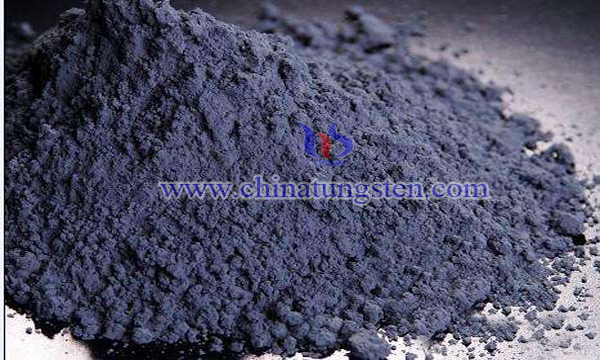Production Method of Tungsten Powder from Tungsten Waste
- Details
- Category: Tungsten Information
- Published on Thursday, 02 August 2018 18:39
Due to the important position of tungsten resources and the scarcity of stocks, the recycling of tungsten waste is highly valued, especially in the United States, Japan, Germany and other countries. For example, about 35% of tungsten products in the United States use recycled tungsten. Compared with developed industrial countries, the recycling of tungsten waste in China possesses a later start point and there are fewer specialized techniques.

The general tungsten waste treatment processes are through hydrometallurgy, aluminum silicon thermal reduction, electrothermal reduction, calcination-ammonia leaching method, soda sintering method, etc., among which zinc melting method, electrolysis method, mechanical method, and acid leaching method have been industrially applied.
Coarse-grained tungsten powder is used to prepare cemented carbide and ultra-thick tungsten carbide. The applications are as: petroleum perforating bombs, reloading armor-piercing projectiles, rebound-guided missiles, radiation-proof materials, and drill bits for oil drilling. The common method for preparing coarse-grained tungsten powder using tungsten waste is insufficient in: long reduction time, difficult control process, high cost, and high energy consumption. In short, it is not easy to prepare coarse-grained tungsten powder.
Recently, researchers have proposed a method for efficiently processing tungsten waste to produce coarse-grained tungsten powder, solving the problem of secondary resource treatment of tungsten waste and the production of coarse-grained tungsten powder.
The processes are as follows:
1) Pre-decontamination treatment:
Add tungsten-containing waste to a weakly acidic solution with a concentration of 5%-10%. The liquid-solid ratio is 1:5-1:8, and the pretreatment temperature is 20-50 °C. 15-30 min, the residue obtained is a tungsten carbide precipitate;
2) Oxidizing calcination:
The degreasing residue obtained in the step 1) is placed in a muffle furnace for low-temperature oxidative calcination at 400 to 600 ° C for 4 to 8 hours to obtain a calcined sand;
3) Press molding and self-propagating reaction:
The calcined sand obtained in the step 2) is uniformly mixed with a certain amount of a reducing agent and an activator, and a self-propagating high-temperature reaction is carried out in an inert atmosphere or a vacuum to melt the calcined sand into a metal solution. The solution is in a molten state, the heavier tungsten sinks, and the lighter metal oxide floats, and reaches the stratification. The solution is then cooled below 50 ° C, and metal block has condoned and is removed out;
3) Cooling, slag-removing and crushing:
After cooling the metal block obtained in the step 3), tapping to remove the slag, obtaining a tungsten metal block, and then performing centrifugation and centrifugation to obtain a coarse-grained tungsten powder with purity of 99.9% or more and a particle size of more than 0.2 mm.
The tungsten waste above includes tungsten leaching slag, tungsten-containing alloy scrap, a reacted tungsten-containing waste catalyst, or a tungsten alloy grinding material in a tungsten concentrate. It has a wide range of sources, and the process and equipment are simple. Due to the characteristics of self-propagating high-temperature reaction, the new technology has the advantages of low energy consumption, high efficiency, self-purification, high purity, and no pollution, and is suitable for industrial production.
- Tungsten Powder Manufacturer & Supplier, Chinatungsten Online: tungsten-powder.com
- Tungsten News & Prices of China Tungsten Industry Association: www.ctia.com.cn
- Molybdenum News & Price: news.molybdenum.com.cn
- Tel.: 86 592 5129696; Fax: 86 592 5129797; Email: sales@chinatungsten.com



 sales@chinatungsten.com
sales@chinatungsten.com